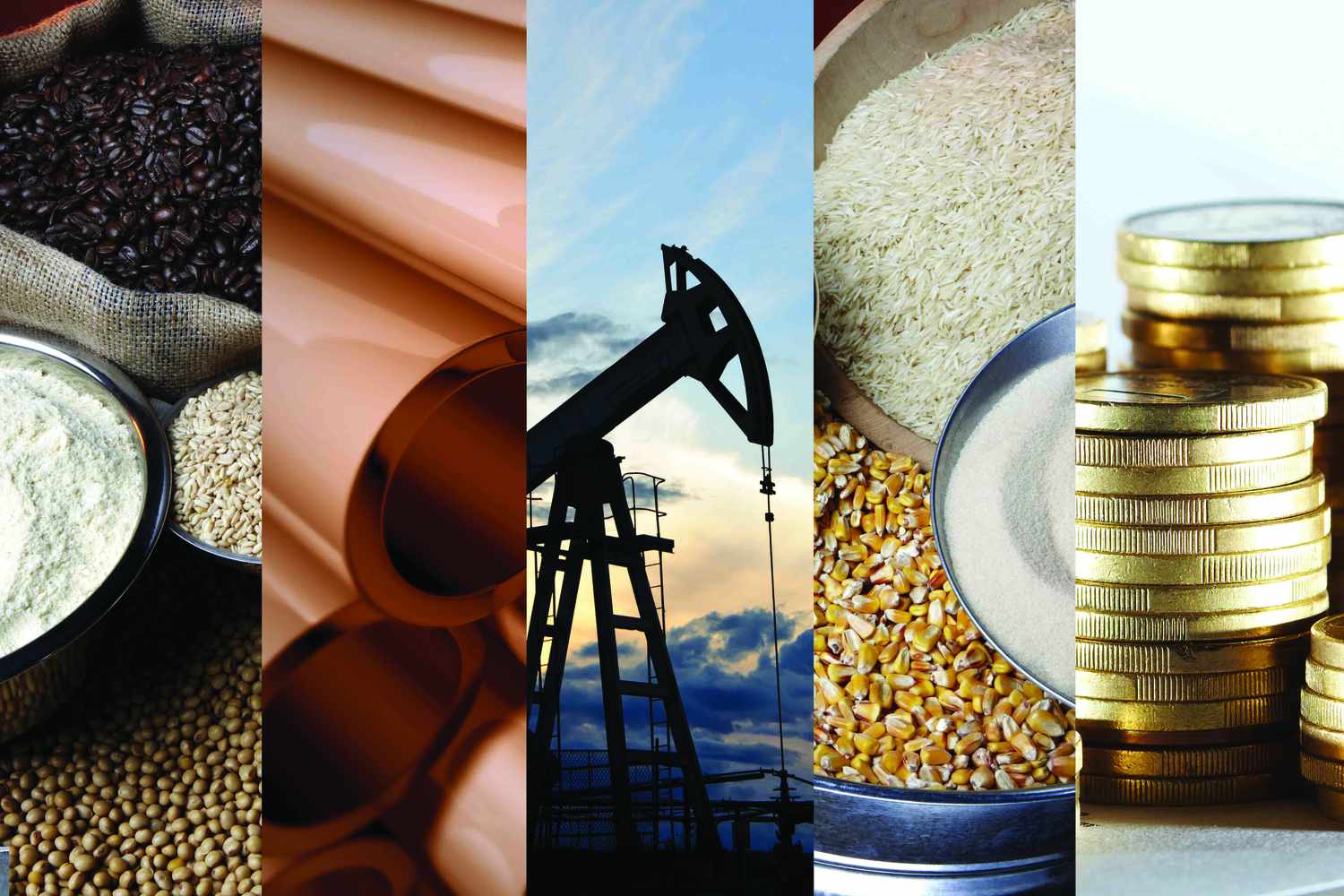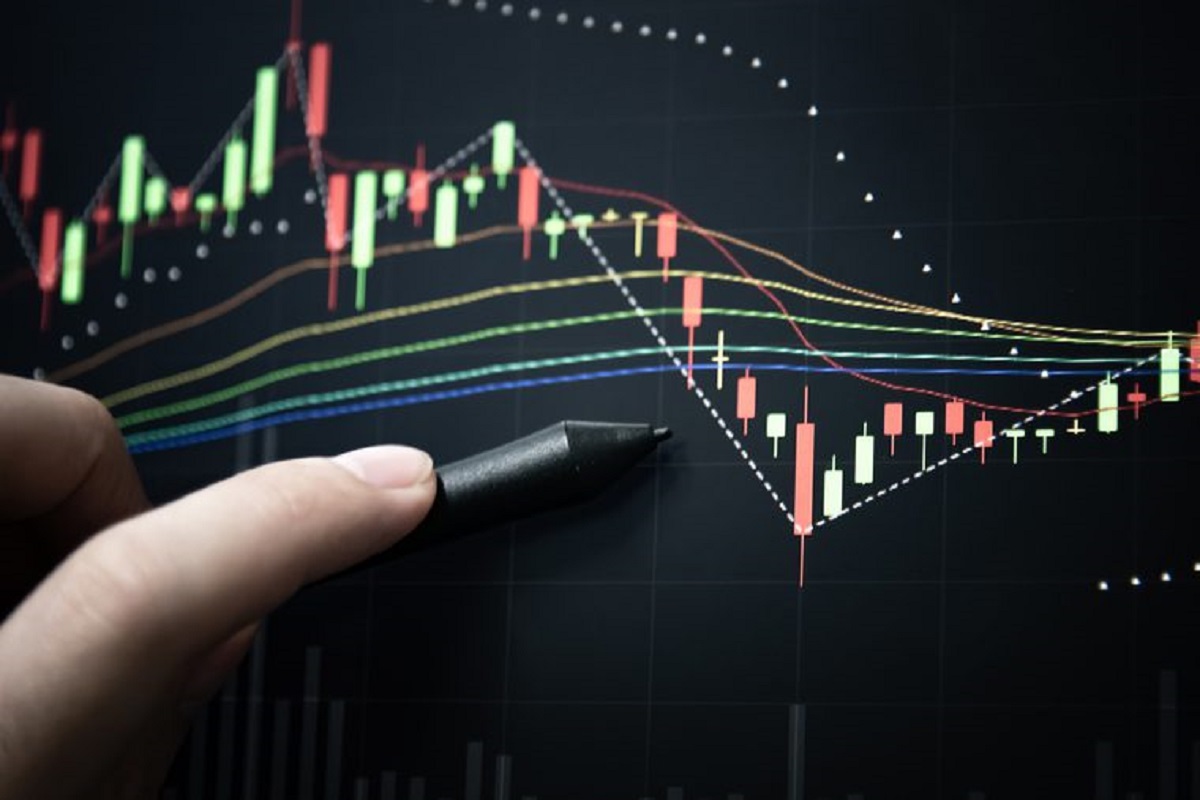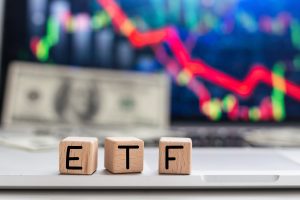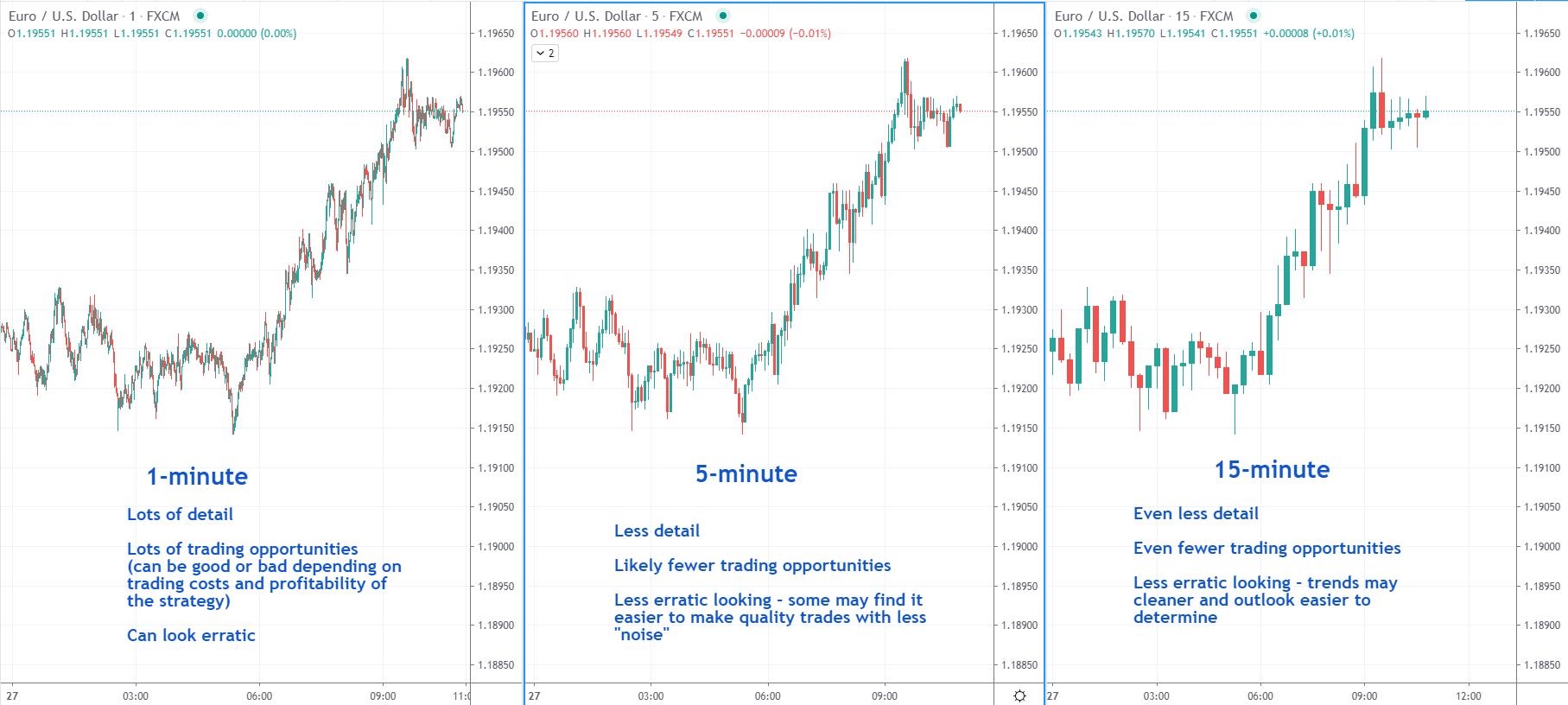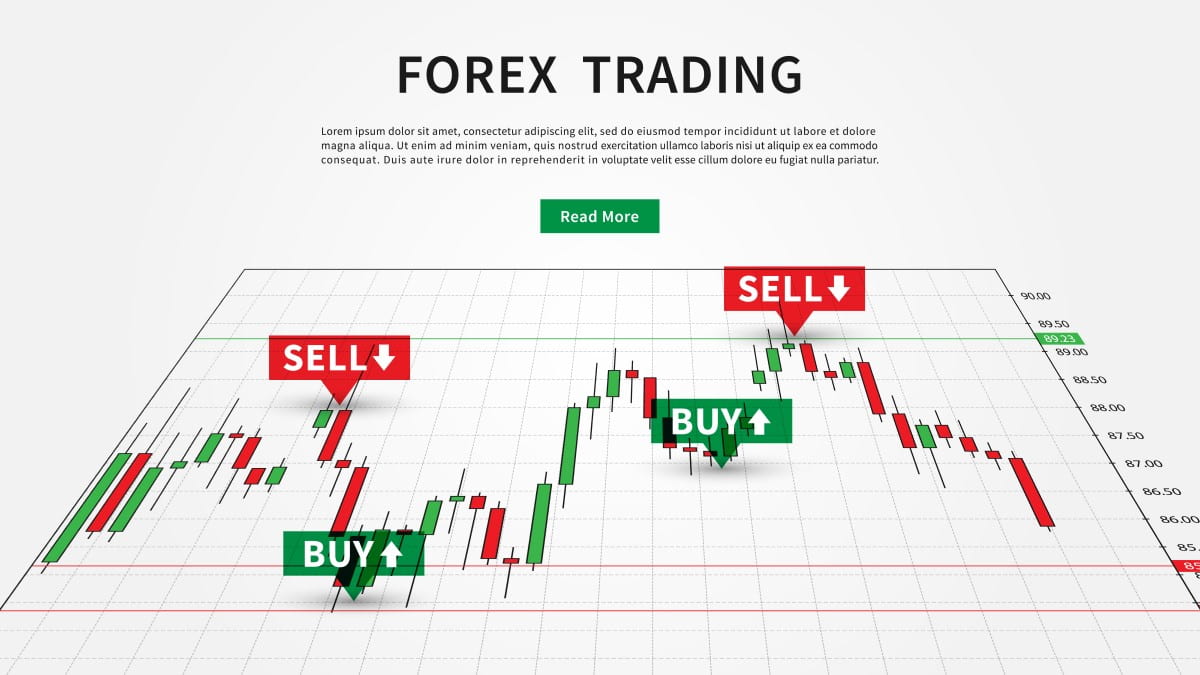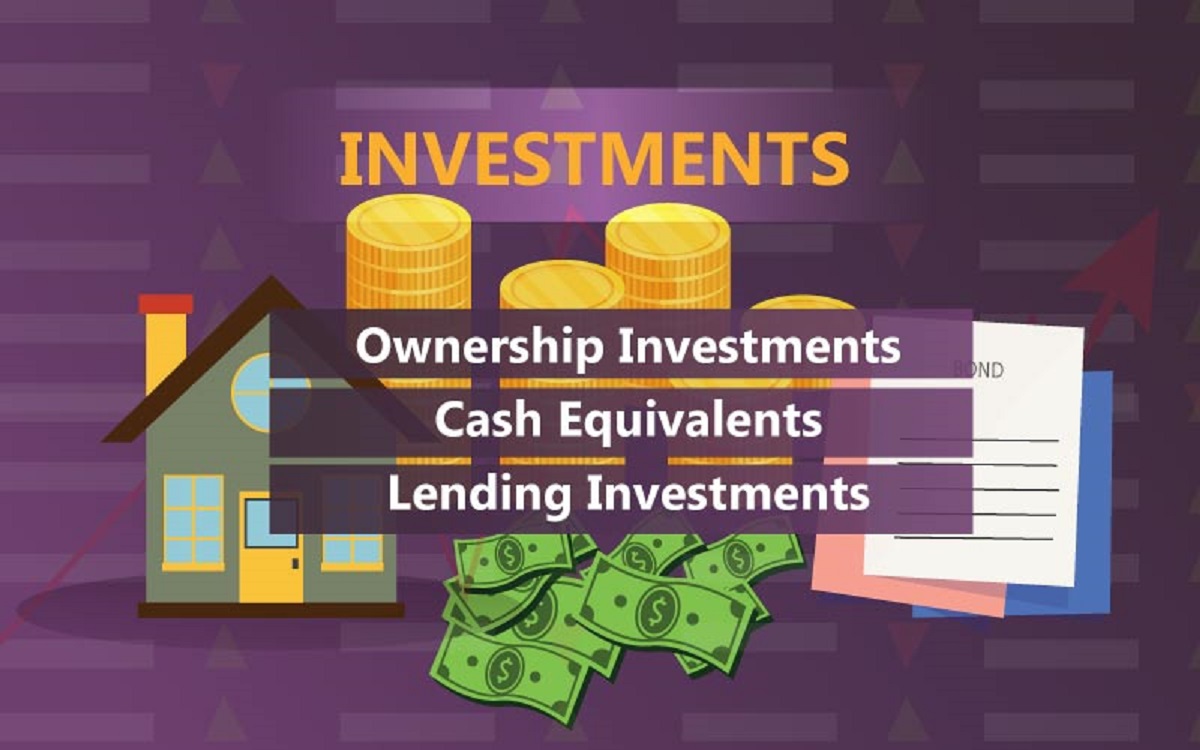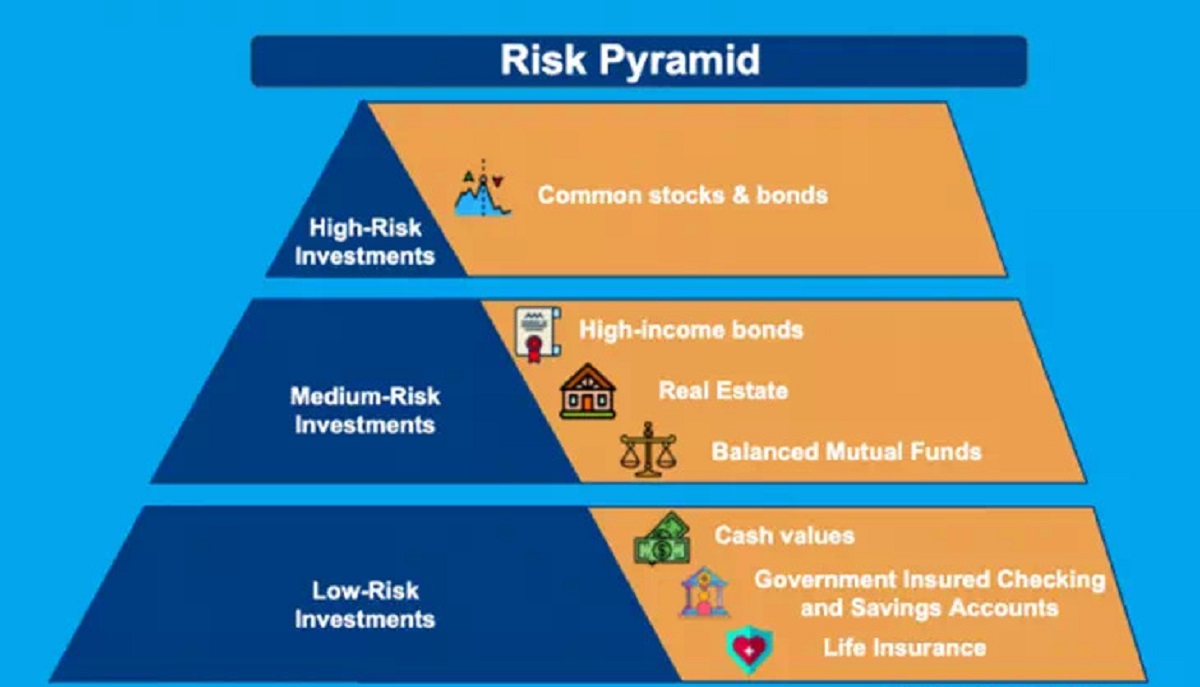Introduction
Welcome to the exciting world of commodities trading! Whether you’re a seasoned investor or just starting out, understanding the ins and outs of this dynamic market is crucial for success. Commodities trading involves the buying and selling of raw materials, such as metals, energy, agriculture products, and more. This multi-trillion-dollar industry offers immense opportunities for traders to profit from price fluctuations.
From ancient civilizations to modern times, commodities have played a pivotal role in global trade. They are the essential building blocks of our society, powering industries and feeding nations. The commodities market is driven by supply and demand dynamics, geopolitical factors, weather conditions, and market sentiment, making it a fascinating and challenging arena to navigate.
Commodities trading offers several unique advantages. Firstly, it provides a diverse investment portfolio, allowing traders to diversify their risk and potentially achieve higher returns. Secondly, commodities have tangible value and are not influenced by financial market volatility to the same extent as stocks or bonds. Furthermore, commodities trading offers opportunities for hedging against inflation and capitalizing on long-term trends.
However, it’s important to recognize that commodities trading also entails risks. Prices can be highly volatile, influenced by geopolitical tensions, natural disasters, and unexpected events. To mitigate these risks, traders need to stay informed, analyze market trends, and develop effective strategies.
In this comprehensive guide, we will delve into the world of commodities trading, exploring its definitions, different types of commodities, how it works, factors that impact prices, trading strategies, benefits, risks, popular exchanges, and even famous traders. By the end of this article, you will have a solid understanding of commodities trading and be better equipped to navigate this complex market.
Definition of Commodities Trading
Commodities trading refers to the buying and selling of physical goods, known as commodities, on various financial exchanges. These commodities can be classified into different categories, including metals (such as gold and silver), energy resources (such as crude oil and natural gas), agricultural products (such as corn and wheat), and livestock (such as cattle and hogs).
The primary purpose of commodities trading is to facilitate the efficient exchange of these raw materials between producers and end-users. Producers, such as farmers or mining companies, can use commodities exchanges to sell their goods and secure a price for their products in advance. On the other hand, end-users, such as manufacturers or investors, can enter into contracts to buy these commodities at a specified future date and price.
Commodities trading can take place on various types of platforms, including traditional exchanges and electronic trading systems. These platforms provide a transparent marketplace for buyers and sellers to trade commodities, with prices determined by the forces of supply and demand.
One important aspect of commodities trading is the use of standardized contracts. These contracts specify the quality, quantity, and delivery terms of the commodities being traded. Standardization simplifies the trading process and ensures that all parties involved have a clear understanding of the terms of the trade.
Commodities trading can be conducted in two primary ways: through spot trading and futures trading. Spot trading involves the immediate purchase or sale of commodities for delivery within a short period. This type of trading is common for commodities like precious metals or agricultural products that are perishable or have a direct physical demand. Futures trading, on the other hand, involves the buying or selling of contracts that obligate the traders to make or take delivery of the commodities at a specified future date. This type of trading allows for hedging against future price fluctuations.
Overall, commodities trading provides a platform for market participants to engage in the buying and selling of physical goods, enabling price discovery and risk management. It plays a crucial role in global trade and the functioning of various industries, making it an integral part of the financial markets.
Types of Commodities
The commodities market encompasses a wide range of raw materials that can be classified into various categories. Here are the main types of commodities traded in the market:
- Metal Commodities: Metal commodities include precious metals like gold, silver, platinum, and palladium, as well as industrial metals like copper, aluminum, zinc, and nickel. Precious metals are often sought after as safe-haven assets and store of value, while industrial metals are utilized in various sectors, such as construction, manufacturing, and electronics.
- Energy Commodities: Energy commodities consist of crude oil, natural gas, gasoline, heating oil, and other petroleum products. These commodities are vital for powering the global economy, and their prices are influenced by factors such as geopolitical tensions, supply and demand dynamics, and government policies.
- Agricultural Commodities: Agricultural commodities encompass a wide range of products, including grains (such as corn, wheat, and soybeans), soft commodities (such as coffee, cocoa, and sugar), livestock (such as cattle and hogs), and dairy products. Agricultural commodities are influenced by factors such as weather conditions, global food demand, and government regulations.
- Commodity Currencies: Commodity currencies are currencies of countries heavily dependent on commodity production and exports. Examples include the Canadian dollar (CAD), Australian dollar (AUD), and Norwegian krone (NOK). The value of these currencies is closely linked to the performance of the commodities they are associated with.
- Other Commodities: In addition to the above categories, there are other commodities that do not fit into a specific classification. These include items like timber, water, carbon emissions permits, and rare earth metals, among others.
Each type of commodity has its own unique characteristics and influences on the market. Traders must carefully analyze the supply and demand factors, as well as other market dynamics, to make informed decisions when trading these commodities.
It is important to note that within each type of commodity, there may be different grades or qualities that can affect pricing and trading strategies. For example, gold can come in different purities, and crude oil can vary in terms of its API gravity and sulfur content.
Understanding the different types of commodities and their specific market drivers is essential for successful trading in this dynamic and diverse marketplace.
How Commodities Trading Works
Commodities trading operates on a complex system of supply and demand, market participants, and various trading mechanisms. Here’s a breakdown of how commodities trading works:
Market Participants: Commodities trading involves multiple entities, including producers, consumers, traders, speculators, and hedgers. Producers are those who extract or grow the commodities, such as farmers, miners, or energy companies. Consumers are end-users who require commodities for their production or consumption needs. Traders are individuals or institutions that facilitate the buying and selling of commodities. Speculators aim to profit from price fluctuations by buying low and selling high. Hedgers, on the other hand, use commodities futures contracts to protect against price volatility.
Exchanges and Trading Platforms: Commodities are traded on various exchanges or electronic trading platforms. These include well-known exchanges like the Chicago Mercantile Exchange (CME Group), the New York Mercantile Exchange (NYMEX), and the London Metal Exchange (LME). These platforms provide a centralized marketplace where buyers and sellers can meet to trade commodities. They also ensure price transparency and facilitate the settlement and delivery of the commodities.
Spot Trading: Spot trading involves the immediate purchase or sale of commodities for delivery in the present or near future. Spot prices are determined by the current supply and demand dynamics in the market. Spot markets are prevalent for commodities like precious metals and agricultural products, where there is a direct physical demand.
Futures Trading: Futures trading involves the buying or selling of contracts that obligate the traders to make or take delivery of the commodities at a specified future date. Futures contracts standardize the terms of the trade, including the quantity, quality, and delivery month. Traders use futures contracts to hedge against price fluctuations or speculate on future price movements. These contracts trade on commodities exchanges and are subject to margin requirements.
Options Trading: Options trading in commodities allows traders to buy or sell the right, but not the obligation, to buy or sell a futures contract at a specific price within a certain timeframe. Options provide flexibility, as traders can limit their potential losses while still benefiting from potential price movements in the underlying commodity.
Technical and Fundamental Analysis: Traders in the commodities market use various analytical techniques to make informed trading decisions. Technical analysis involves studying price charts, patterns, and indicators to identify potential buying or selling opportunities. Fundamental analysis, on the other hand, focuses on evaluating the underlying factors that affect the supply and demand of commodities, such as weather conditions, geopolitical events, and economic data.
Trading Strategies: There are numerous trading strategies employed in commodities trading. Some common strategies include trend-following, where traders aim to capitalize on established price trends, and range trading, where traders seek to profit from price oscillations within a defined range. Spread trading involves simultaneously buying and selling related commodities to exploit price differentials, while options strategies offer various ways to hedge and speculate on price movements.
Risk Management: Commodities trading carries inherent risks due to price volatility and unpredictable market conditions. Risk management techniques, such as setting stop-loss orders, diversifying portfolios, and managing leverage, are essential for protecting capital and reducing potential losses in commodities trading.
Overall, commodities trading is a dynamic and exciting market where participants can profit from price fluctuations in various raw materials. Understanding the intricacies of supply and demand, using effective strategies, and managing risk are key factors in successful commodities trading.
Factors that Affect Commodities Prices
Commodities prices are influenced by a wide range of factors, including both supply-side and demand-side dynamics. Understanding these factors is crucial for traders to navigate the commodities market. Here are some key factors that can impact commodities prices:
- Supply and Demand: The fundamental principle of supply and demand plays a significant role in determining commodities prices. If the supply of a commodity exceeds demand, prices tend to decrease, whereas limited supply and high demand can lead to price increases.
- Geopolitical Events: Political and geopolitical events, such as wars, conflicts, sanctions, or trade disputes between nations, can have a significant impact on commodities prices. These events can disrupt production, transportation, or trade routes, causing supply disruptions or changes in demand.
- Weather Conditions: Weather events, such as droughts, floods, hurricanes, or extreme temperatures, can have a profound effect on commodities prices, especially in the agricultural and energy sectors. Poor weather conditions can lead to crop failures, reduced yields, or disruptions in energy production, influencing supply and, consequently, prices.
- Economic Factors: Economic indicators, including GDP growth, inflation rates, interest rates, and consumer sentiment, can impact commodities prices. Strong economic growth generally leads to increased demand for commodities, while economic downturns can result in reduced demand.
- Government Policies and Regulations: Government policies and regulations can have a substantial influence on commodities prices. These can include trade policies, subsidies, tariffs, export restrictions, or regulations related to production, transportation, or storage. Changes in government policies can lead to price fluctuations and affect market dynamics.
- Currency Strength: The strength or weakness of currencies relative to commodities can impact their prices. A weaker currency can make commodities more expensive for buyers using that currency, while a stronger currency can make commodities more affordable.
- Technological Advancements: Technological advancements can impact commodities prices by improving efficiency in production, transportation, and storage. Advancements in extraction techniques, such as fracking in the energy sector or precision agriculture in the agricultural sector, can increase supply or reduce costs, affecting prices.
- Global Demand: Global economic growth, population growth, industrialization, and changes in consumer preferences can drive demand for commodities. For example, emerging economies experiencing rapid industrialization can lead to increased demand for energy and metals.
- Speculation and Investor Sentiment: Speculation and investor sentiment can significantly impact short-term commodities prices. Traders and investors may engage in buying or selling based on expectations of future price movements, leading to price volatility.
It is important for commodities traders to stay informed about these factors and their potential impact on prices. Using fundamental analysis, market research, and staying abreast of relevant news and events can help traders anticipate and react to price fluctuations in the commodities market.
Strategies for Commodities Trading
Commodities trading requires careful planning and strategic decision-making to navigate the dynamic market and maximize profits. Here are some common strategies employed by traders in the commodities market:
- Trend Following: This strategy involves identifying and following established price trends in commodities. Traders analyze historical price data and technical indicators to determine the direction of the trend. They aim to enter trades in the direction of the trend, buying when prices are rising and selling when prices are falling.
- Range Trading: Range trading involves taking advantage of price oscillations within a defined range. Traders identify support and resistance levels in the price chart and enter trades when prices approach these levels. They aim to buy near support and sell near resistance, profiting from the repetition of price movements within the range.
- Spread Trading: Spread trading involves simultaneously buying and selling related commodities or contracts to profit from price differentials. Traders exploit price relationships between two or more similar commodities or futures contracts. For example, they may buy contracts for one delivery month and sell contracts for a different month in anticipation of narrowing or widening spreads.
- Momentum Trading: Momentum traders capitalize on strong price movements and trends in commodities. They look for assets with high trading volumes and price momentum, aiming to profit from the continuation of the trend. This strategy relies on technical analysis indicators, such as moving averages or momentum oscillators, to determine when to enter or exit trades.
- Options Strategies: Options provide traders with various strategies to hedge against price risk or speculate on price movements. These strategies include buying call or put options, writing covered calls, or employing complex options spreads. Options can offer flexibility and limited downside risk while allowing for potential upside profits.
- Fundamental Analysis: Fundamental analysis involves evaluating the underlying factors that influence commodities prices and supply-demand dynamics. Traders analyze economic data, weather patterns, geopolitical events, and government policies to make trading decisions. By understanding the fundamental drivers affecting commodities, traders can identify potential trading opportunities.
- Seasonal Trading: Seasonal trading focuses on recurring patterns or trends that occur during specific times of the year. Certain commodities, like agricultural products, exhibit seasonality due to planting and harvesting seasons. Traders use historical data and analyze supply-demand dynamics during these periods to anticipate price movements and enter trades accordingly.
- Hedging: Hedging involves using futures or options contracts to protect against potential price fluctuations. Producers or consumers of commodities can hedge their exposure by taking offsetting positions, thus reducing the risk of adverse price movements. This strategy aims to stabilize revenues or costs and minimize potential losses.
It’s important for traders to choose the strategies that align with their risk tolerance, market conditions, and trading goals. Additionally, combining multiple strategies or adjusting strategies based on market conditions can further enhance trading outcomes.
Successful commodities trading requires careful analysis, disciplined execution, and continuous adaptation to changing market dynamics. Traders should consider utilizing a combination of technical and fundamental analysis techniques, as well as risk management strategies, to increase their chances of achieving profitable trades.
Benefits and Risks of Trading Commodities
Trading commodities offers several benefits and opportunities, but it also carries inherent risks. Understanding these benefits and risks is crucial for traders to make informed decisions and manage their investments effectively. Here’s an overview of the advantages and challenges of trading commodities:
Benefits:
- Diversification: Commodities provide an opportunity to diversify investment portfolios beyond traditional stocks and bonds. Including commodities in a portfolio can help spread risk and potentially increase returns by taking advantage of the unique performance characteristics of this asset class.
- Tangible Assets: Commodities are physical assets with intrinsic value. Unlike stocks or bonds, which are based on the performance of companies or governments, commodities represent real-world goods such as metals, energy resources, or agricultural products. This tangibility can provide a sense of security and stability in times of market volatility.
- Inflation Hedge: Commodities have historically acted as an inflation hedge. When inflation rises, the cost of commodities tends to increase, providing a potential safeguard against the eroding value of traditional currencies. Investing in commodities can help protect purchasing power and maintain the real value of investments over time.
- Liquidity: Many commodities markets are highly liquid, with significant trading volumes and tight bid-ask spreads. This liquidity allows traders to enter and exit positions easily, ensuring efficient price discovery and minimizing the impact of transaction costs.
- Profit Potential: The commodities market offers opportunities for significant profits if traders can accurately anticipate market movements. Volatility in commodities prices, driven by factors such as geopolitical events, supply disruptions, or changing demand, can present lucrative trading opportunities for those able to navigate the market effectively.
Risks:
- Price Volatility: Commodities prices can be highly volatile, making them susceptible to sudden and large price swings. Factors such as weather conditions, geopolitical tensions, and unexpected events can significantly impact prices. Traders need to be prepared for the inherent uncertainty and potential losses associated with volatile market conditions.
- Market and Political Risks: Commodities markets can be influenced by a wide range of market and political risks. Macroeconomic factors, government policies, trade disputes, and regulatory changes can create uncertainties and disrupt market dynamics, affecting commodities prices and trading strategies.
- Leverage and Margin Risks: Trading commodities typically involves the use of leverage, which amplifies both potential profits and losses. While leverage can enhance gains, it also magnifies risks. Traders must carefully manage their positions and be mindful of margin requirements to avoid excessive losses.
- Supply and Demand Imbalances: Commodities prices are driven by the balance between supply and demand. Supply disruptions, changes in production levels, unexpected weather conditions, or shifts in global demand can result in imbalances and impact prices. Traders need to stay informed about these factors and their potential effects on commodities markets.
- Regulatory and Operational Risks: Trading commodities involves complying with various regulatory requirements and understanding the operational aspects of the market. Traders need to be aware of exchange rules, contract specifications, and trade execution procedures to navigate the markets successfully.
It is essential for traders to carefully assess their risk tolerance, develop a comprehensive risk management plan, and stay informed about the factors that influence commodities markets. By understanding and managing these risks effectively, traders can position themselves for potential rewards in the commodities market.
Popular Commodities Trading Exchanges
Commodities trading takes place on various exchanges around the world, providing a centralized platform for buyers and sellers to trade a wide range of commodities. These exchanges are essential for ensuring transparent price discovery, facilitating trade execution, and enabling the settlement and delivery of commodities. Here are some of the popular commodities trading exchanges:
- Chicago Mercantile Exchange (CME Group): The CME Group is one of the largest and most well-known futures exchanges globally. It offers a wide range of commodities futures contracts, including energy products like crude oil and natural gas, agricultural commodities like corn and soybeans, precious metals like gold and silver, and more. The CME Group provides robust liquidity, electronic trading platforms, and efficient clearing and settlement processes.
- New York Mercantile Exchange (NYMEX): The NYMEX, a division of the CME Group, is focused on energy commodities, including crude oil, natural gas, heating oil, and gasoline. It is a leading platform for trading energy futures contracts and offers diverse product offerings to meet the needs of market participants.
- London Metal Exchange (LME): The LME is the world’s premier exchange for industrial metals. It offers futures and options contracts for metals such as copper, aluminum, zinc, nickel, lead, and tin. The LME plays a vital role in establishing global benchmark prices and providing a transparent marketplace for metal trading.
- Intercontinental Exchange (ICE): The ICE is a leading exchange group that operates various commodities exchanges. Its flagship commodities exchange, ICE Futures US, offers a wide range of futures contracts for commodities like sugar, coffee, cotton, and cocoa. ICE also operates exchanges for energy products, including crude oil, natural gas, and refined products.
- Tokyo Commodity Exchange (TOCOM): As Japan’s largest commodity futures exchange, TOCOM provides a platform for trading a range of commodities, including precious metals, energy products, agricultural products, and rubber. TOCOM is known for its focus on futures contracts for gold, silver, platinum, and crude oil.
- Multi Commodity Exchange of India (MCX): MCX is India’s leading commodities derivatives exchange and offers futures trading in a wide range of commodities, including metals like gold and silver, energy products like crude oil and natural gas, agricultural commodities like cotton and spices, and more. MCX is known for its significant volume and liquidity in the Indian commodities market.
These are just a few examples of popular commodities trading exchanges, and there are numerous other exchanges worldwide that cater to different regions and specific commodities. Traders should select the exchange(s) that align with their trading objectives, product offerings, liquidity, and regulatory considerations.
When trading on these exchanges, traders can take advantage of electronic trading platforms, advanced order types, real-time market data, and efficient clearing processes to execute their trades effectively and efficiently.
Famous Commodities Traders
Over the years, there have been several famous and influential traders who have made a significant impact in the world of commodities trading. These traders have demonstrated exceptional skill, strategies, and market insights, earning them a place among the most renowned figures in the industry. Here are some famous commodities traders:
- Jesse Livermore: Known as one of the greatest traders in history, Jesse Livermore made a substantial fortune in the early 20th century by speculating on commodities and stocks. He accurately predicted significant market movements and employed a methodical approach to trading based on technical analysis.
- Jim Rogers: Jim Rogers is a well-known commodities trader, investor, and author. He co-founded the Quantum Fund with George Soros and achieved impressive returns during the 1970s commodities boom. Rogers is a proponent of commodity investing and has been a successful trader in various commodities markets, including metals, energy, and agriculture.
- Peter Brandt: Peter Brandt is a legendary commodities trader with a career spanning several decades. He is known for his expertise in trading futures contracts and has shared his knowledge through books, courses, and coaching. Brandt has a disciplined trading approach and has achieved consistent success in various commodities markets, including grains, metals, and currencies.
- Paul Tudor Jones: Paul Tudor Jones is an esteemed hedge fund manager and commodities trader. He is the founder of Tudor Investment Corporation and gained recognition for correctly predicting the 1987 stock market crash. Jones has traded commodities extensively, particularly in energy and metals, and is known for his macroeconomic analysis and trend-following strategies.
- Andy Hall: Andy Hall, also known as the “God of Crude Oil Trading,” is a prominent commodities trader specializing in the energy sector. He enjoyed great success as the head of the Astenbeck Capital Management hedge fund, where his expertise in oil trading played a pivotal role in generating significant returns.
- John Arnold: John Arnold is a notable commodities trader who made a fortune primarily through natural gas trading. As a former Enron trader, he displayed exceptional skill in predicting and capitalizing on natural gas price movements. Arnold went on to found Centaurus Energy and continued his successful career in commodities trading.
These are just a few examples of famous commodities traders who have left a lasting impact on the industry. Their trading strategies, insights, and market acumen have not only brought them financial success, but have also contributed to the development of trading techniques and the understanding of commodities markets.
It is important for aspiring traders to study the methods and approaches of these legendary traders, while also developing their own unique trading style suited to their individual strengths and market conditions. Learning from the experiences and successes of these renowned traders can provide valuable insights and inspiration for those venturing into the world of commodities trading.
Conclusion
Commodities trading is a fascinating and dynamic market that offers a plethora of opportunities for traders and investors. Understanding the definitions, types of commodities, trading strategies, and factors that affect prices is essential for success in this complex arena.
By participating in commodities trading, individuals can diversify their investment portfolios, capitalize on price fluctuations, and potentially protect against inflation. The tangible nature of commodities and their importance in various industries make them a valuable asset class for traders seeking stability and long-term growth.
However, it is crucial to recognize that commodities trading also involves risks. Price volatility, geopolitical events, supply and demand imbalances, and regulatory changes can all impact commodities prices. Traders must manage these risks effectively through thorough analysis, risk management strategies, and staying informed about market forces.
Popular commodities trading exchanges, including CME Group, NYMEX, LME, ICE, TOCOM, and MCX, provide traders with robust platforms for executing trades and accessing global commodities markets. These exchanges offer liquidity, transparency, and efficient trading mechanisms to facilitate the buying and selling of commodities.
Throughout history, famous commodities traders like Jesse Livermore, Jim Rogers, and Paul Tudor Jones have made significant contributions to the field. Their trading prowess and sound strategies serve as inspiration for traders looking to achieve success in commodities trading.
In conclusion, commodities trading is a captivating market that presents both opportunities and challenges. By understanding the intricacies of commodities, employing effective trading strategies, managing risks, and staying informed about market dynamics, traders can position themselves for success in this ever-evolving industry.







